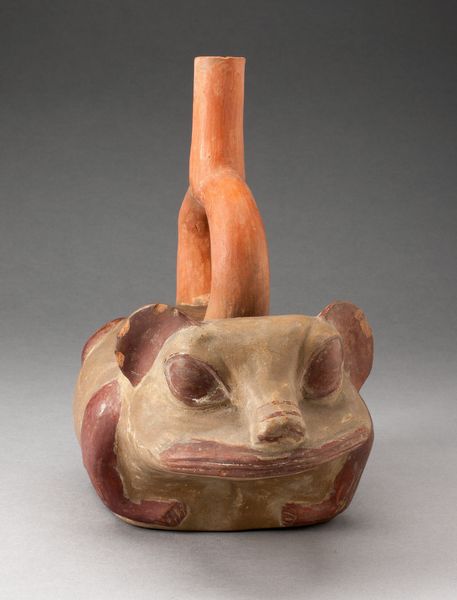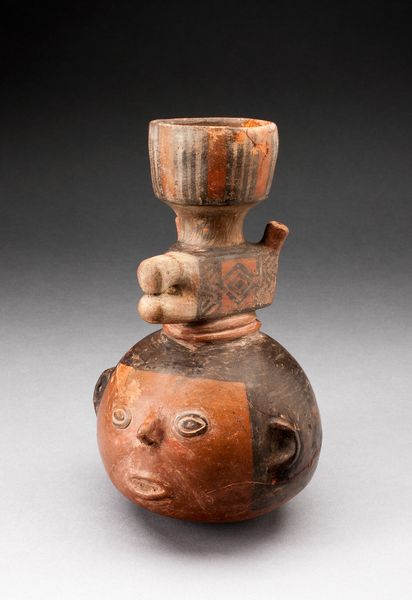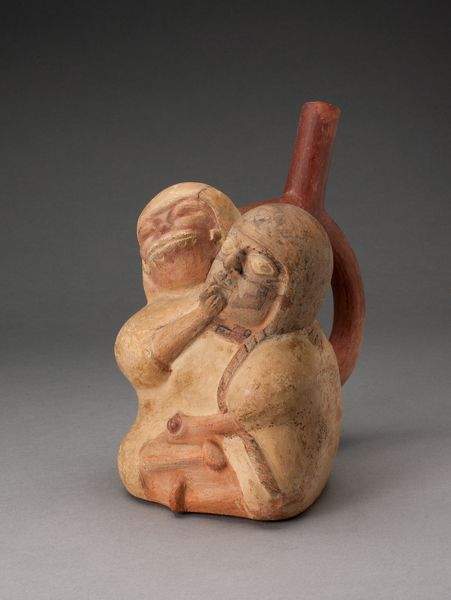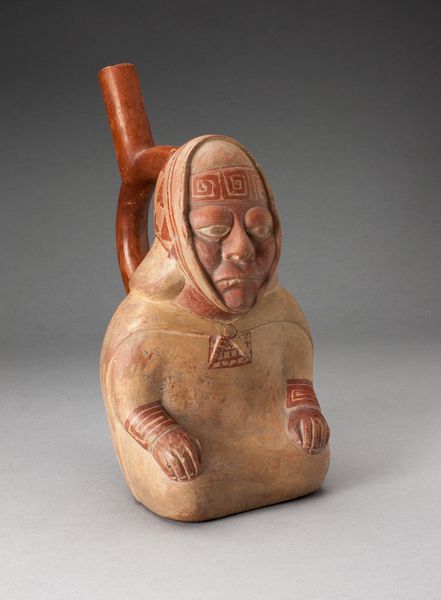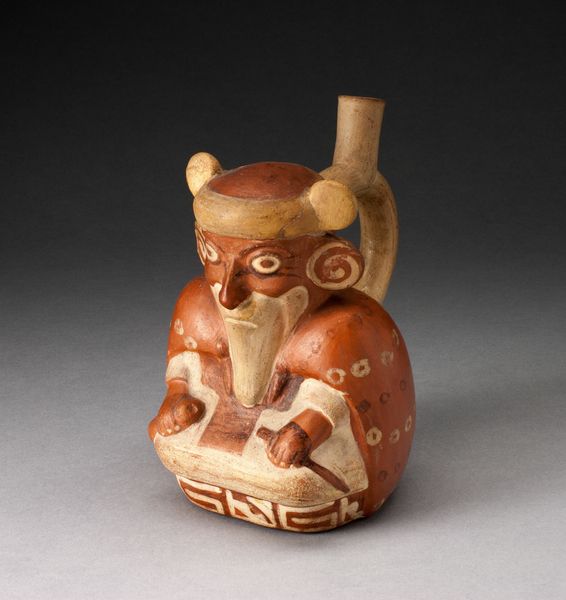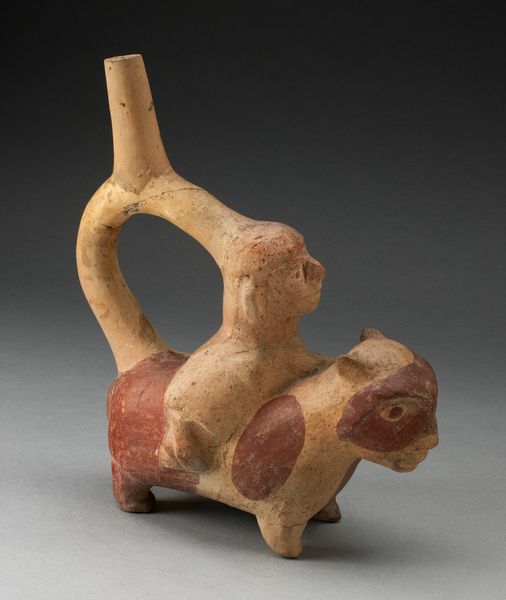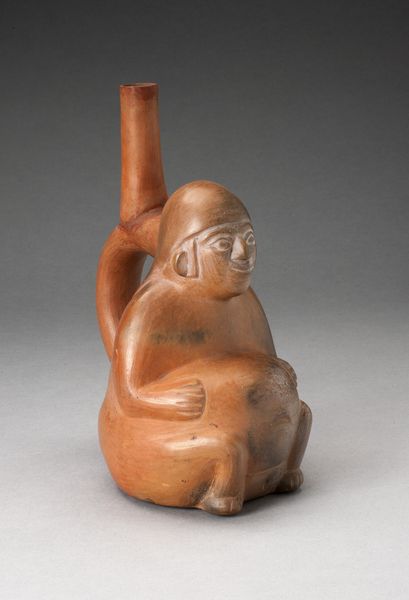
Handle Spout Vessel in the Form of a Crouching Figure with Human Heads Attached to Side c. 100 - 500
0:00
0:00
ceramic, terracotta
#
ceramic
#
figuration
#
form
#
ceramic
#
terracotta
#
indigenous-americas
Dimensions: H. 23.5 cm (10 1/4 in.)
Copyright: Public Domain
Editor: This striking ceramic piece is entitled "Handle Spout Vessel in the Form of a Crouching Figure with Human Heads Attached to Side" by the Moche culture, dating roughly from 100 to 500 AD. The almost solemn facial expression gives it such presence. How do you approach interpreting the power of this ceramic figure? Curator: Let us consider the relationships between its formal elements. Notice the stark contrast in textures; the smoothness of the primary figure against the matte surface of the applied heads. Does that create a visual hierarchy? What of the monochromatic color scheme? Editor: I see that the primary figure is a lighter tone, which might suggest its dominance, but the two other heads create almost a balance within the whole form. Curator: Precisely. Consider too how the handle, shaped almost like a stirrup, functions not only practically but also aesthetically. How does its curvature interact with the rounded form of the crouching figure? It echoes the rounded heads, doesn't it? Editor: Yes! It also acts as a visual bridge connecting the spout to the main figure, integrating the utilitarian function into the sculptural aspect. I initially only considered the faces, but I see now that the other visual aspects help provide so much balance to the overall piece. Curator: Indeed. And by considering the relationships between form, texture and composition, we can perhaps perceive a greater harmony at play than might appear at first glance. Every shape leads the viewer somewhere else. Editor: I now appreciate how its form speaks so strongly, independent of external references. Thank you! Curator: My pleasure. This exercise emphasizes how art speaks through visual language, and this work proves an exceptional case study.
Comments
No comments
Be the first to comment and join the conversation on the ultimate creative platform.
